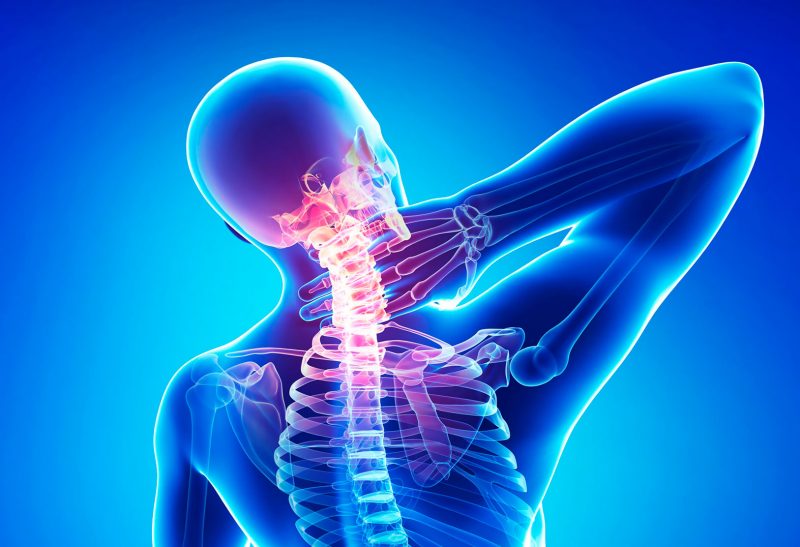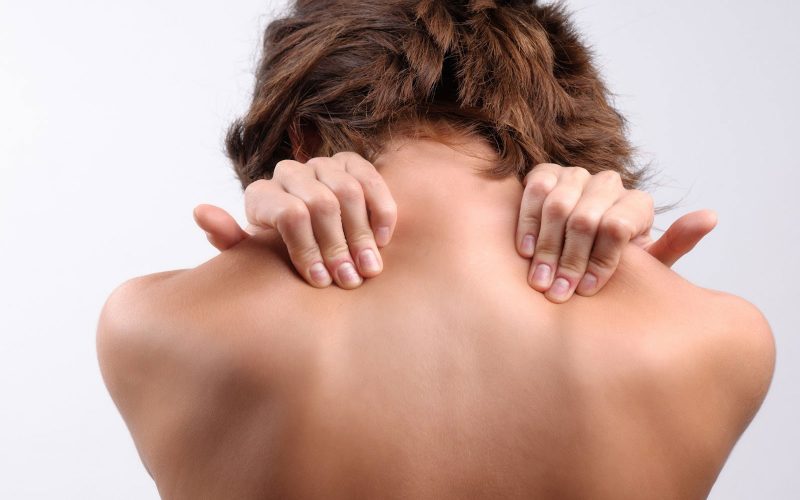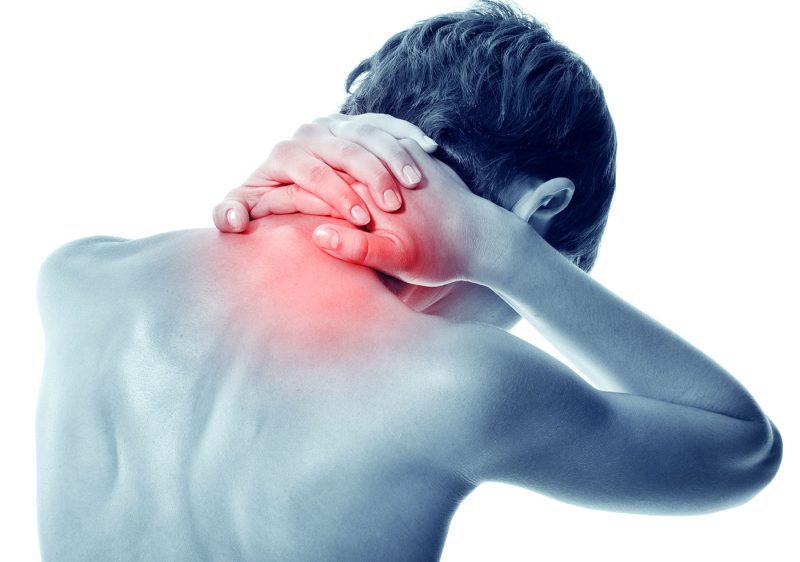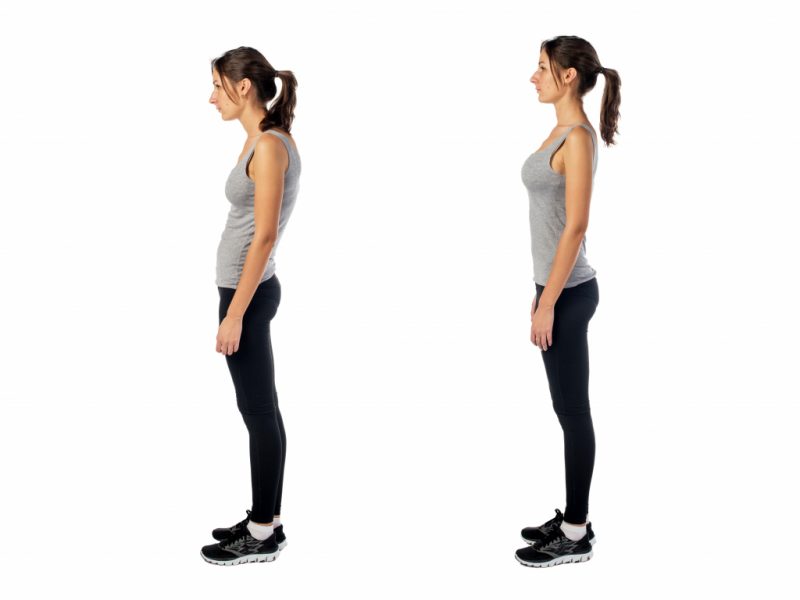Cervical osteochondrosis (SHOX) is a pathological change in the vertebrae that leads to ossification of the soft components. As a result of this, the depreciation effect disappears, the hard bones rub against each other, squeezing the blood vessels and nerve fibers located nearby. With damage to the cervical vertebrae, patients usually complain of dizziness, soreness of the upper back, migraines. Treatment of cervical osteochondrosis at home can alleviate symptoms, however, to completely get rid of the pathology, you need qualified help: special massage, gymnastics, physiotherapy and medications.
Material Content:
What is the danger of cervical osteochondrosis?
The vertebrae of the cervical spine are located close to each other, so the slightest changes in at least one of them lead to discomfort. In addition, the neck connects the head to the rest of the body, it is in it that the vessels that supply blood to the brain pass, and when they are squeezed, oxygen starvation can develop. Therefore, the localization of the pathological process in the cervical vertebrae is one of the most dangerous forms of the disease.

Due to failures in the cerebral circulation, patients develop migraines, blood pressure rises (hypertension), and vegetovascular dystonia (VVD) occurs. In addition, problems with the sensory organs are often observed - vision, hearing are reduced, coordination is disturbed, and the cardiovascular and respiratory systems also fail.
In severe, advanced cases, patients develop vertebral artery syndrome. This vessel supplies oxygen and beneficial substances to the cerebellum and medulla oblongata, due to its compression, their functions are disturbed. The patient complains of dizziness, darkening in the eyes, may lose consciousness. Spinal or cerebral ischemia, stroke may also occur.
In addition to vessels in the vertebrae, nerve roots are also located, their defeat is called radiculopathy. Bone growths may occur on them, as a result of which mobility in the neck partially or completely disappears.
The most serious complication of osteochondrosis of the cervical spine is compression of the spinal cord, which, without specialized assistance, leads to death.
Causes and symptoms of cervical osteochondrosis

The causes of osteochondrosis are always associated with the aging of the body and age-related changes in tissues, however, some factors increase the risk of pathology and rejuvenate it:
- motionless lifestyle, sedentary work;
- prolonged regular stay in one, static pose;
- overweight, especially in the case of a sharp increase in mass;
- constant presence in a state of stress, nervous tension;
- frequent hypothermia of the neck;
- autoimmune pathologies in which cartilage tissue suffers;
- injuries in the neck or neck;
- congenital abnormal structure of the vertebrae.
In addition, heredity, hormonal stability and metabolism will play a large role.
Symptoms are mainly localized in the neck, head, and upper back. Patients complain of the appearance of lumbago, increased pain during attempts to turn his head, the occurrence of crunch when moving. Sometimes a person cannot move at all because of severe pain.
In addition to lumbago, sick people are concerned about constant headaches that give into the eyes and temples. Sight or hearing may also deteriorate, a haze appears in front of the eyes. After sudden movements of the neck, nausea appears, sometimes vomiting, the head may become dizzy, and consciousness may be impaired.
Special attention should be paid to radicular symptoms, the manifestation of which depends on the defeat of a particular nerve ending:
- C1 - pathological sensitivity or its disappearance in the neck;
- C2 - the appearance of pain in the area of the parietal bones or neck;
- C3 - loss of control over the tongue, as a result of which speech is disturbed, neck soreness from the affected nerve;
- C4 - muscle hypotension in the neck and head, respiratory failure, irradiation of pain in the right hypochondrium and heart region;
- C5 - pathological sensitivity on the outer surface of the shoulder;
- C6 and C7 - soreness that spreads to the neck, shoulder blade and arm from the side of the pinched nerve root.
The degree of development of the disease

In the development of cervical osteochondrosis, four stages of the disease are distinguished, which differ in the intensity of the symptoms and changes in the vertebrae:
- In the first stage, the fluid reserves disappear from the core of the intervertebral discs, from which its location changes, the functioning and physiological structure are disrupted. There are no clinical manifestations at this stage, since the pathological process has not yet spread beyond the vertebra.
- In the second stage, the disk becomes flatter, which increases the load on the ligaments and muscles. They strain, it becomes harder and harder for them to work normally. Dizziness with cervical osteochondrosis may occur even at this stage.
- The third stage is characterized by bright changes in bone and cartilage, the development of subluxations, arthrosis. A pronounced clinical picture appears.
- At the fourth stage, there is the appearance of bone growths on the vertebrae, trauma to nerve fibers.
The detection of the disease in the early stages increases the chance of a full recovery, and later treatment can lead to unpleasant consequences.
Diagnostic Methods
An experienced doctor can easily diagnose cervical osteochondrosis, since the disease has a characteristic clinical picture.

To determine the stage, neglect and prevalence of the pathological process, a number of additional examinations are prescribed to the patient:
- X-ray - determined by a change in the mobility and location of the vertebrae, a decrease in the intervertebral fissures, salt deposits
- computed tomography - makes it possible to see gaps, changes in disk height, instability of the vertebrae, compression of nerve fibers and spinal cord;
- Magnetic resonance imaging - allows you to accurately see pathological changes, determine the blood flow and the condition of the nerve roots.
Usually, only x-rays of the cervical spine are enough, more expensive methods are used in complicated and unclear cases.
Syndromes due to osteochondrosis of the cervical spine
A syndrome is a combination of several clinical manifestations that are combined into one symptom complex.

The following syndromes are characteristic of osteochondrosis of the cervical vertebrae:
- vertebral - pathological processes in the cartilage and bone tissue of the vertebrae;
- cardiac - resembles pathologies of the cardiovascular system, for example, angina pectoris or a pre-infarction condition;
- vertebral artery - squeezing of blood vessels that supply the brain;
- radicular - violation of the functions of nerve roots.
Each syndrome has its own characteristic list of symptoms that must be present in this symptom complex.
Disease treatment
The treatment of osteochondrosis in traditional medicine is carried out with the help of massage, special exercises, physiotherapy and the use of medications. The choice of methods depends on the course of the disease: in the acute process, treatment with drugs comes to the forefront, and in case of osteochondrosis in remission, physiotherapy and self-massage.
Medicines

To eliminate the cause and reduce the intensity of symptoms, several groups of drugs are used:
- analgesics - eliminate pain, with severe pain they are administered intravenously, and when the disease subsides, tablet forms of drugs are prescribed;
- non-steroidal anti-inflammatory - during oral administration they have an analgesic effect, and with local application they remove swelling and inflammation;
- muscle relaxants - help relax the cervical muscles, which are in constant tension with osteochondrosis;
- vitamins - strengthen the general health of the patient.
Drug therapy is actively used in the acute phase of the disease, other methods are used during remission.
Folk remedies
Means based on various plants (decoctions, tinctures or infusions) are often used to prevent relapse of the disease. However, before using folk recipes, you need to consult a doctor and make sure that there are no contraindications, for example, allergies.

One of the most popular recipes is the use of lilac, dill or hops. Means based on them help fight inflammation, relieve pain, improve neck mobility.
Massage for cervical osteochondrosis
Massage for osteochondrosis should be prescribed only during the remission of the disease. In rare cases, the use of massage therapy in the acute phase is allowed, however, then a specially trained person is needed. It should act on certain points of the body, reflexively affecting the cervical muscles, it is strictly forbidden to massage the affected area.
During the procedure, the muscles of the neck and back of the patient, at least the upper part of it, should be completely relaxed.You can be in a sitting position or lie on your stomach, but for the first option you should use a special massage chair.
Regular procedures help overstressed muscles to relax, and as a result, painful sensations decrease, stiffness of movements disappears. In addition, the flow of blood and lymph improves, which has a beneficial effect on the development of the disease.
Physiotherapy
Physiotherapeutic methods of treatment are aimed at stimulating the regeneration of body tissues, as well as at reducing pain.

The procedures have the following actions:
- pain relief;
- muscle tension relief;
- improvement of tissue trophism at the site of the lesion;
- elimination of inflammation.
Most commonly used methods are electrophoresis, balneotherapy, ultrasound, acupuncture.
Physiotherapy

Exercises for cervical osteochondrosis are allowed to be done strictly during remission, movements in the acute phase can lead to a worsening of the patient's condition. All physiotherapy exercises are reduced to turns and tilts of the head. It is important to perform actions slowly, without sudden movements. In case of pain - stop the lesson and seek the advice of a specialist.
Prevention
Osteochondrosis, like any other disease, is easier to prevent than to treat later.

Preventive measures include:
- tracking posture;
- exercises for the neck;
- breaks when working at a computer, reading, writing, etc.
- the use of chondroprotectors and vitamins;
- playing sports.
If a person has a tendency to develop pathology, he needs to periodically visit a specialist and undergo research. This will help to identify the disease at an early stage and start treatment on time.
- Tanya
- TATYANA
- Maria












